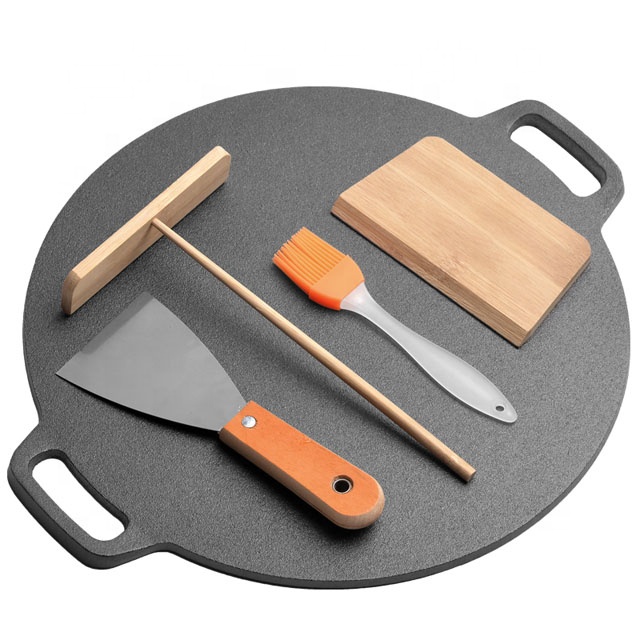
restoring cast iron frying pan
Restoring a cast iron frying pan is not only a rewarding project but also an essential skill for any cooking enthusiast. These pans have a rich history and are prized for their durability and ability to retain heat evenly. However, over time, cast iron can become rusty or develop a non-stick surface that isn't performing like it should. Here’s a step-by-step guide on how to restore your cast iron frying pan to its former glory.
The first step in the restoration process is to thoroughly clean the pan. If your pan is heavily rusted or has built-up grime, a combination of vinegar and water can work wonders. Create a solution using equal parts vinegar and water and soak the pan for about an hour. Use a scrub brush or steel wool to remove the rust and any tough residue. For lighter stains, you may simply use hot, soapy water and a scour pad.
Once your pan is clean, it’s crucial to dry it completely. Cast iron is known for its propensity to rust, so moisture should not remain on the surface. You can dry the pan on the stove over low heat, ensuring that it is thoroughly dried out. After drying, apply a thin layer of vegetable oil or flaxseed oil over the entire surface of the pan. This oil will create a non-stick finish and is essential for seasoning the cast iron.
Seasoning is the process of creating a protective layer on the pan through a controlled application of heat and oil. Preheat your oven to 450°F (232°C). Place a baking sheet or aluminum foil on the lower rack to catch any drips, and then place your oiled pan upside down on the middle rack. Bake the pan for about an hour. This process allows the oil to polymerize and bond to the cast iron, creating a durable non-stick coating.
restoring cast iron frying pan

After an hour, turn off the oven and let the pan cool inside. This gradual cooling helps prevent cracking due to sudden temperature changes. Once the pan is cool, you’ll notice a shiny, smooth finish that indicates successful seasoning.
To maintain the lifetime of your restored cast iron frying pan, it’s important to care for it properly. Avoid soaking it in water or placing it in the dishwasher, as excessive moisture can lead to rust. Instead, clean it with a soft sponge and hot water immediately after use. If food sticks, you can use a small amount of coarse salt to scrub while rinsing with hot water.
Furthermore, after each use, dry the pan completely and apply a thin layer of oil to keep its surface seasoned and protected. With proper care, your cast iron frying pan can last for generations, becoming a cherished tool in your kitchen.
In conclusion, restoring a cast iron frying pan requires patience and attention to detail, but the results are well worth the effort. A well-maintained cast iron skillet not only enhances your cooking experience but also adds a unique flair to your culinary creations. Embrace the art of restoration, and you will find yourself enjoying the benefits of perfectly cooked meals for years to come.
-
Season Cast Iron Perfectly with GPT-4 Turbo TipsNewsAug.01,2025
-
High Quality Cast Iron Cookware - Baixiang County Zhongda MachineryNewsAug.01,2025
-
Premium Cast Iron Pan: Durable & Perfect HeatNewsAug.01,2025
-
High Quality Kitchen Durable Black Round Cast Iron Cookware Pancake Crepe Pan-Baixiang County Zhongda Machinery Manufacturing Co., Ltd.NewsAug.01,2025
-
Cast Iron Cookware - Baixiang County Zhongda Machinery | Nonstick, Heat ResistanceNewsAug.01,2025
-
High Quality Kitchen Durable Black Round Cast Iron Cookware - Baixiang County Zhongda Machinery | Non-Stick, Heat Retention, DurableNewsJul.31,2025


